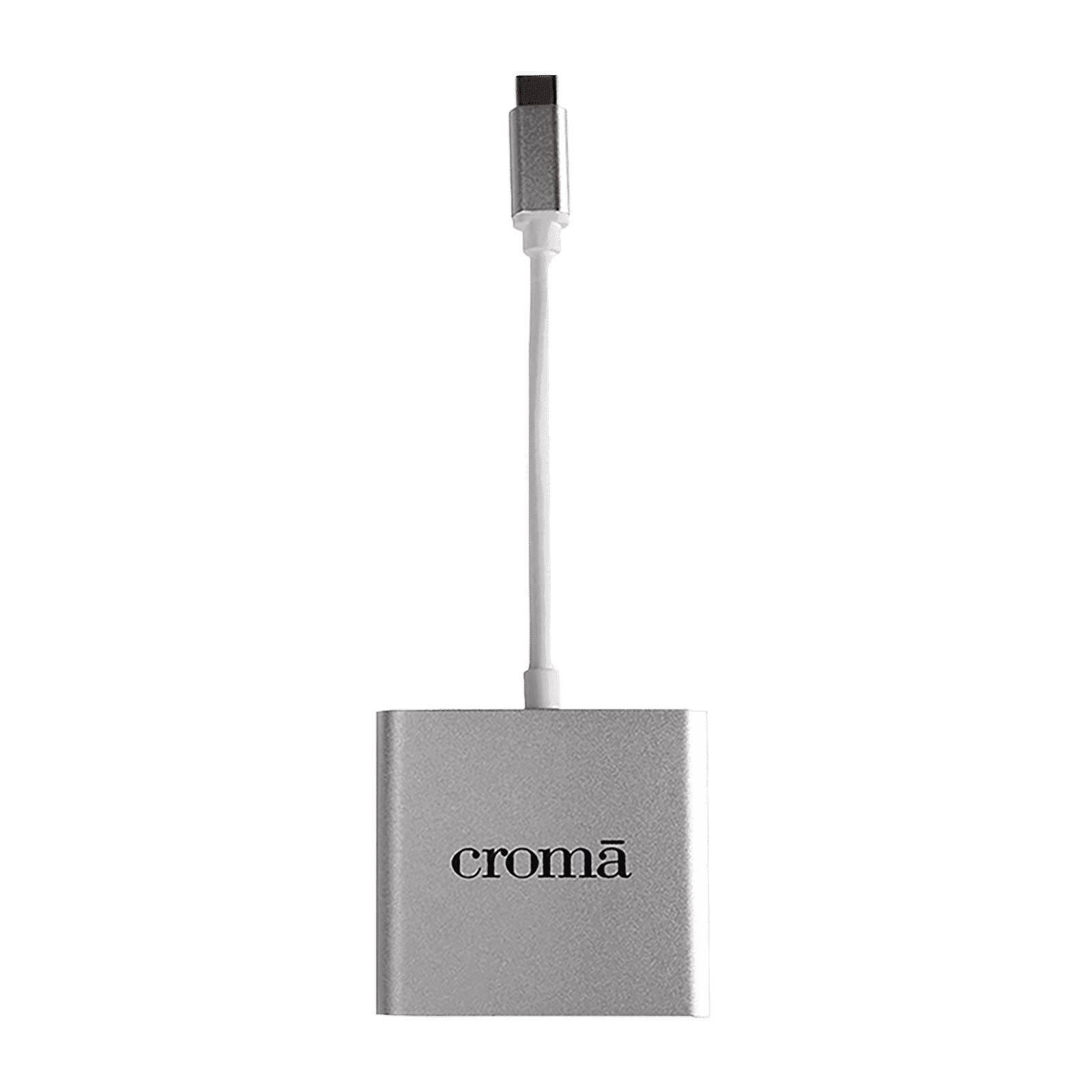%20(Presentation)%20(1600%20x%20600%20px)(74)-e74fc6a6-7421-4984-bb37-18620810bf2c.webp&w=3840&q=75)
Consumer Electronics
•03 min read

Buy Croma USB 3.0 Type C to USB 2.0 Type A, USB 3.0 Type C, HDMI Type A USB Hub (High-Quality Material, Silver) online at best prices from Croma. Check product details, reviews & more. Shop now!
Have you ever wondered if your USB 2.0 devices will work in a USB 3.0 port without a hitch? This is a common concern among tech enthusiasts and everyday users alike. USB technology has come a long way with faster speeds and enhanced functionality, yet many still ask, "Will 2.0 USB work in 3.0 port?" In this article, we provide you with a comprehensive checklist to ensure seamless use of your USB 2.0 devices in USB 3.0 ports. Read on to learn more about compatibility, performance differences and best practices to avoid potential issues.
Modern USB ports are designed with backward compatibility in mind. This means that even older USB 2.0 devices can be used in newer USB 3.0 ports without major issues. The universal standards in USB technology ensure that devices can interact smoothly despite differences in their generation. With these compatibility standards, the trustworthiness of platforms like Tata Neu becomes clear as they consistently offer reliable tech solutions.
The short answer is yes. When you ask, "Will 2.0 USB work in 3.0 port?", the answer remains affirmative. USB 3.0 ports are thoughtfully designed to accept USB 2.0 devices, albeit with the device operating at its inherent USB 2.0 functionality level.
When a USB 2.0 device is plugged into a USB 3.0 port, the port automatically downgrades functionality to match the specifications of the connected device. This simple adaptation ensures that your legacy devices still operate efficiently, whether you are transferring data or connecting essential peripherals.
One of the most notable differences between the two versions is the data transfer speed. USB 2.0 supports speeds up to 480 Mbps, while USB 3.0 offers speeds up to 5 Gbps. Although a USB 2.0 device in a USB 3.0 port will still operate at 480 Mbps, the advantage of the newer port is evident when high-speed data transfer is required with compatible devices.
Another key difference lies in the power output and available bandwidth. USB 3.0 ports provide higher power output, which is particularly beneficial for devices that require more energy to operate efficiently. While the boost in power does not upgrade a USB 2.0 device to operate at USB 3.0 speeds, it can help maintain robust performance, particularly in charging and endurance during data operations.
Although both USB 2.0 and USB 3.0 ports appear very similar in size, they differ in internal pin configurations. This design tweak is what allows for the increased speed and power handling in USB 3.0. For context, later versions such as USB 3.1 and USB 3.2 continue this evolution while maintaining backward compatibility with older devices.
Before connecting your device, ensure that your USB 2.0 device is indeed compatible with USB 3.0 ports. This can typically be done by checking the port labeling on your device and confirming from the device specifications. A careful examination here can save time and mitigate any potential compatibility concerns.
Once compatibility is confirmed, the next step is to test how your device performs. Observe the data transfer speed and charging efficiency when using a USB 2.0 device in a USB 3.0 port. Utilising diagnostic tools can provide insights into whether the device is functioning at its optimal performance level.
If you notice any issues, such as the device not being recognised or data transfer being slower than expected, it may be wise to update all relevant drivers and firmware. Maintaining updated software is essential for ensuring smooth functionality and harnessing the full benefits of the port’s technology.
Insight Corner: Maximise USB 2.0 Device Efficiency in USB 3.0 Ports
Did you know? USB 3.0 ports provide enhanced power output and bandwidth, which can slightly improve the performance of USB 2.0 devices compared to using them in their native ports. However, for truly speedy performance, consider upgrading your devices to USB 3.0 standards. This approach not only ensures faster speeds but also aligns with the aspirational tech trends you might be following on platforms like Tata Neu.
Yes, USB 2.0 devices can be plugged into USB 3.0 headers because the ports are specifically designed for backward compatibility.
The device will work, but it will operate at USB 2.0 speeds and functionality.
Yes, the device will function the same way as it would in a USB 2.0 port despite the port being part of the USB 3.2 standard.
No, USB ports are hardware-specific. Modifying them usually involves replacing the entire motherboard or alternatively using an external USB 3.0 hub.
USB backward compatibility ensures that older devices like USB 2.0 can still function seamlessly in newer USB 3.0 ports. While there are notable differences in speed, power output and bandwidth, the universal design guarantees usability across generations. Following this checklist can help you avoid common issues and optimise device performance. For those who enjoy the convenience of modern technology and the added bonus of rewards, remember that every smart shopping experience, whether for gadgets or appliances, on platforms like Tata Neu brings the additional benefit of earning NeuCoins. These rewards are a testament to the platform's customer-first approach, ensuring that you are always appreciated for choosing a trusted technology partner.